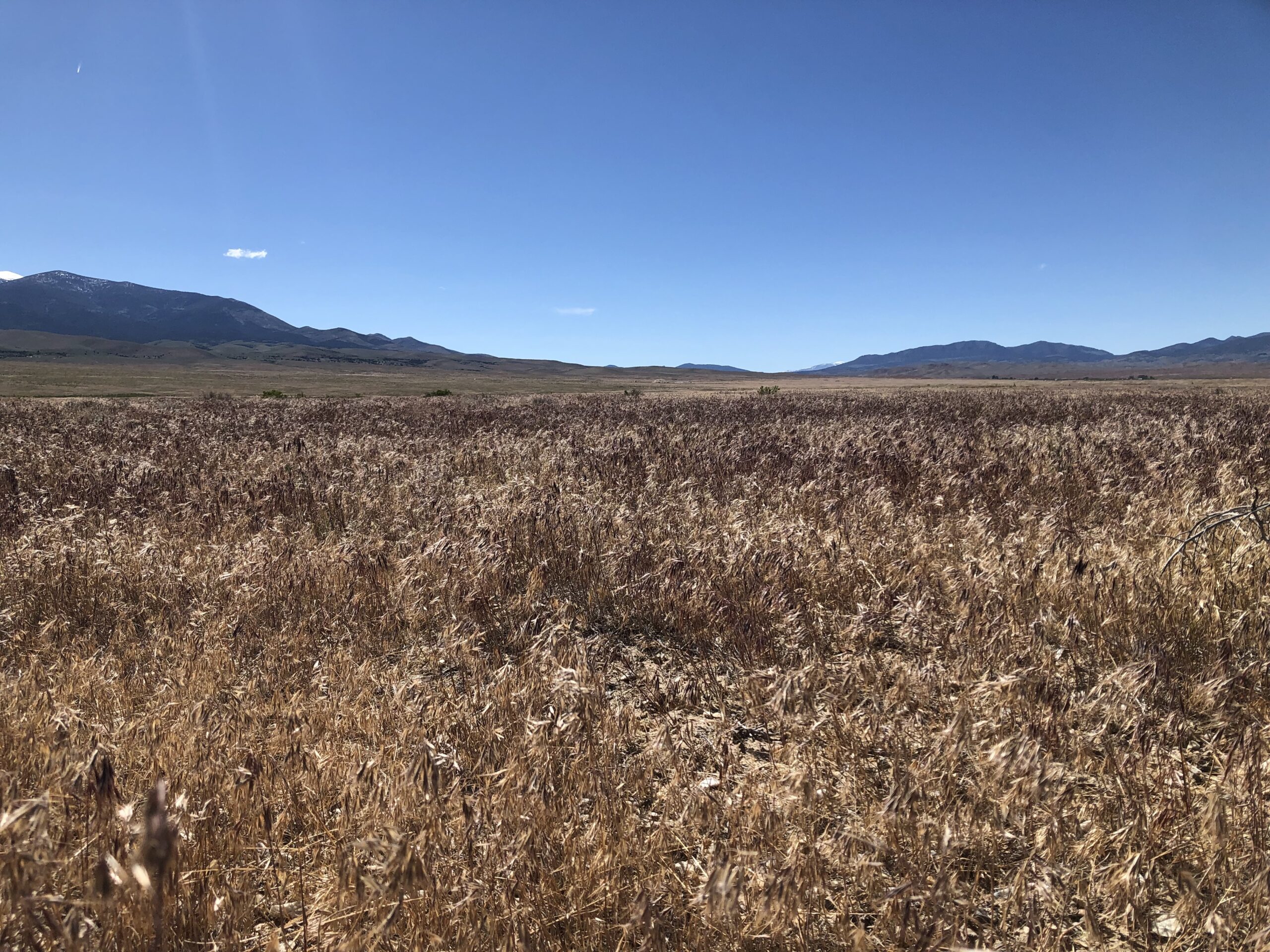Intensive livestock grazing cannot reverse the ecological destruction it causes

Barry Perryman, an agriculture professor from UNR, has asked us all to believe that modern livestock grazing can’t be faulted for today’s degraded rangelands and cheatgrass infestations across the West. Indeed, he asserts that a new kind of seasonal overgrazing – called ‘targeted grazing’ by the livestock industry – is a viable solution to halt spread of this invasive weed and the unnaturally large range fires that come with it.
Not so fast.
It’s true that cheatgrass gained a foothold in the West during the years leading up to the Dust Bowl, and livestock were undoubtedly the primary carriers of cheatgrass seeds and the main destroyers of native steppes and deserts, paving the way for weed invasion. But Dr. Perryman’s “legacy grazing period” narrative – implying that cheatgrass is a result of past, but not current, livestock mismanagement – ignores the reality that cheatgrass is still spreading rapidly today, under today’s livestock management schemes. By saying that scientists “once believed” that heavy livestock grazing livestock causes cheatgrass spread, Perryman is asking the public to toss 100 years of cheatgrass research out the window, as though earlier scientific findings are a mere historical footnote.
What we do know is this: Cheatgrass is an annual weed, green for only six weeks in the spring, and tinder-dry in summer when it fuels huge, unnatural fires. In contrast, the native bunchgrasses of the West are perennials, and in healthy landscapes, aided by intact biological soil crusts, they outcompete cheatgrass seedlings.
Thus, on healthy lands, cheatgrass invasion isn’t a major problem. But starting from bare soil, cheatgrass seedlings outcompete bunchgrass seedlings by sprouting earlier and monopolizing water and soil nutrients. When native bunchgrasses and soil crusts are damaged or destroyed by heavy grazing, these disturbed conditions are ideal for weeds to move in and take over. Cheatgrass seeds evolved to hitchhike in on the curly fur of cattle and sheep. Hike through dry cheatgrass in wool socks, and you’ll get an unpleasant demonstration.
We’ve had heavy grazing by domestic livestock for more than a century in the West. If livestock were such a great “tool” for combating cheatgrass, as some suggest, why isn’t cheatgrass gone already? In real-world application of fall and winter cattle grazing (there are plenty of public-land grazing allotments already requiring this), it has failed to put a dent in cheatgrass infestations.
The classic college textbook used by agriculture departments in the West, Range Management, recommends that livestock grazing in the arid West be limited to removing no more than 30 percent of the annual grass production, in order to sustain the health of the vegetation for the next year. Nonetheless, federal agencies routinely authorize 50 to 65 percent forage utilization — taking out the majority of all the grass that will grow throughout the entire year. This chronic (and officially sanctioned) overgrazing has gone on unchecked for more than a century. No wonder native wildlife is so scarce compared to its abundance before the onset of western agriculture, and no wonder the native bunchgrasses are being grazed into oblivion and replaced by cheatgrass, medusahead, red brome, and other flammable weeds.
Big fires in western basins are an unnatural occurrence; sagebrush grasslands burn very, very rarely under natural conditions. Indeed, sagebrush couldn’t exist in these basins if fires were frequent. The current vast infestations of flammable weeds on western public lands – which did not exist prior to EuroAmerican settlement – is predominantly the result of ongoing overgrazing through the introduction of non-native cattle and sheep. It’s long past time to restore healthy, native sagebrush ecosystems, where fires are small and rare.
Dr. Perryman is the chair of the UNR Agriculture department. Its previous chair, Tamzen Stringham, testified in court – in the context of Western Watersheds Project’s lawsuit to block new public land grazing privileges to the Hammond ranchers in Oregon – that livestock grazing is beneficial in order to fight cheatgrass. Her arguments were roundly rejected by a federal judge after they were debunked by testimony from other rangeland experts. Apparently UNR didn’t learn its lesson because two years later, here is the chair of the same department promoting essentially the same narrative that the court debunked in its findings of fact, after hearing expert testimony from both sides. According to the judge’s ruling, “Grazing to reduce fire intensity requires a reduction in exotic and invasive grasses, but that would require that first the native bunchgrasses and forbs be overgrazed, which is harmful,” and “sagebrush steppe in the absence of grazing is more fire resistant.”
Beware livestock promoters peddling biased political agendas under the guise of unbiased science. These come in several forms – western land-grant colleges closely intertwined with the ag industry, federal and state land managers recruited from the livestock business, politicians from ranching backgrounds. The UNR Agriculture Department’s mission statement even includes a goal to “enhance our agricultural assets.” It’s their job to promote non-native livestock. But to solve the cheatgrass problem, the loss of soil carbon due to overgrazing, the dwindling of native species of wildlife, we’re going to need more than industry talking points and grazing schemes that are unachievable in the real world.
We need tough, hard-nosed solutions based on sound science. Scaling back the numbers and impacts of private livestock on public lands would be a good start.
Erik Molvar is a wildlife biologist and executive director of Western Watersheds Project, a nonprofit conservation organization dedicated to protecting and restoring watersheds and wildlife throughout the American West. His published scientific research includes findings on effects of herbivory on plants and ecosystem dynamics.
